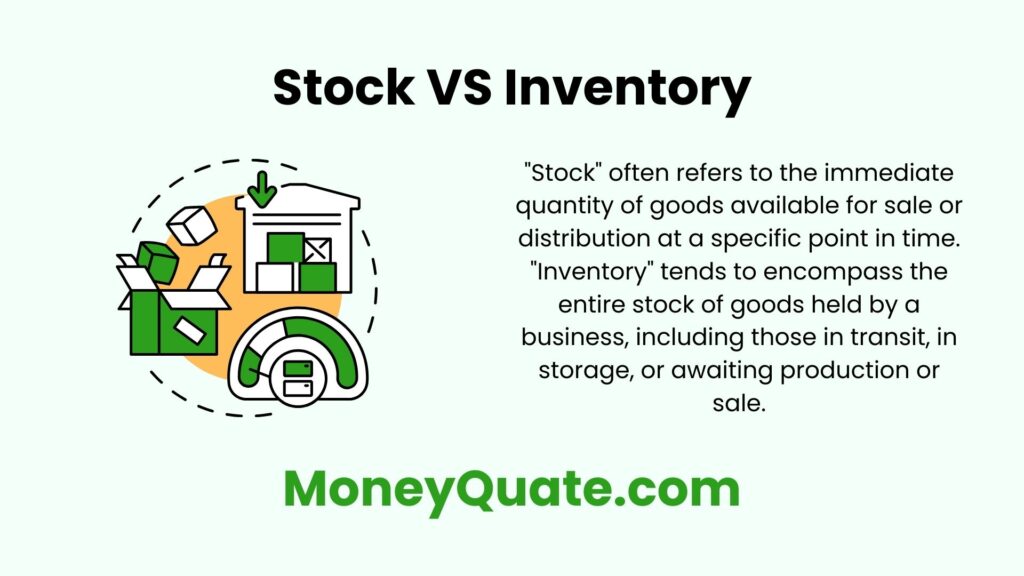Stock and inventory are terms often used interchangeably, but they have distinct meanings in different contexts, especially in business and accounting.

Contents
Stock
Stock can have different meanings depending on the context in which it’s used.
Financial Markets
In financial markets, “stock” typically refers to shares of ownership in a corporation.
These shares represent a claim on the company’s assets and earnings.
Investors buy and sell stock through stock exchanges or over-the-counter markets to gain ownership in a company and potentially earn returns through dividends and capital appreciation.
Example: John decided to invest in Apple stock because he believes in the company’s long-term growth prospects.
Merchandising
In a merchandising context, “stock” refers to the supply of goods or inventory that a business holds for sale to customers.
This can include finished products, raw materials, or components that are ready for sale or use in production.
Example: The clothing store needs to maintain sufficient stock of winter jackets before the onset of the cold season to meet customer demand.
Inventory
Inventory specifically refers to the tangible goods and materials that a business holds for sale or use in its operations.
Retail Operations
In retail, inventory includes the products available for sale to customers.
It encompasses items displayed on shelves or in warehouses, waiting to be sold to consumers.
Example: The grocery store manager conducts regular inventory counts to ensure accurate tracking of products on hand and prevent stockouts.
Manufacturing Operations
For manufacturing companies, inventory consists of raw materials, work-in-progress (partially completed products), and finished goods awaiting distribution.
Example: The automobile manufacturer maintains inventory of steel, rubber, and other materials used in the assembly of vehicles.
Key Differences
Nature
Stock can refer to ownership shares or the broader supply of goods and materials.
Inventory specifically pertains to tangible goods held for sale or use in operations.
Usage
Stock is commonly used in financial contexts related to investments and ownership.
Inventory is primarily used in operational and accounting contexts to manage and track physical goods.
Accounting Treatment
Stock investments are recorded as assets on the balance sheet under investments or equity securities.
Inventory is recorded as a current asset and subject to periodic valuation and adjustments.
Conclusion
Understanding the distinctions between stock and inventory is essential for businesses to effectively manage their operations and finances.
While stock relates to ownership shares and broader supply, inventory specifically refers to tangible goods held for sale or use.
By recognizing these differences, businesses can implement appropriate strategies for managing their assets and optimizing performance.
1 thought on “Stock and Inventory: Breaking Down the Basics”